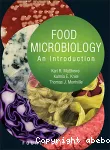Adresse
Infodoc : Réseau des bibliothèques et centres de documentation d'AgroParisTechFrance
contact

Catégories
|
RAMEAU , Nom commun , Champignons microscopiques
Champignons microscopiquesSynonyme(s)Flore microfongique ;Microflore fongique ;Micromycètes Moisissures |
Documents disponibles dans cette catégorie (12)
 Ajouter le résultat dans votre panier Faire une suggestion Affiner la recherche Interroger des sources externes
Ajouter le résultat dans votre panier Faire une suggestion Affiner la recherche Interroger des sources externes
 Livre
Livre978-0-12-814921-81 vol. (XLVII-362 p.)
1 vol. (XLVII-362 p.)ISBN : 978-0-12-814921-8 
 Livre
Livre978-2-7430-2441-31 vol. (XVIII-374 p.)
1 vol. (XVIII-374 p.)ISBN : 978-2-7430-2441-3 
 Livre25 EUR
Livre25 EUR978-2-7592-0943-91 vol. (184 p.)
1 vol. (184 p.)Prix : 25 EUR ISBN : 978-2-7592-0943-9 
 Livre
Livre978-1-138-63784-91 vol. (XII-513 p.)
1 vol. (XII-513 p.)ISBN : 978-1-138-63784-9 
 Livre
Livre978-93-85059-18-61 vol. (X-411 p.)
1 vol. (X-411 p.)ISBN : 978-93-85059-18-6 
 Livre
Livre978-1-55581-938-51 vol. (XVIII-597 p.)
1 vol. (XVIII-597 p.)ISBN : 978-1-55581-938-5 
 Livre
Livre978-2-85206-395-21 vol. (XIII-144 p.)
1 vol. (XIII-144 p.)ISBN : 978-2-85206-395-2 
 Livre
Livre978-2-85206-850-61 vol. (611 p.)
1 vol. (611 p.)ISBN : 978-2-85206-850-6 
 Livre
Livre
 Livre
Livre
 Mémoire
Mémoire
 Livre75 EUR
Livre75 EUR978-2-7430-1565-71 vol. (XXVI-772 p.)
1 vol. (XXVI-772 p.)Prix : 75 EUR ISBN : 978-2-7430-1565-7




